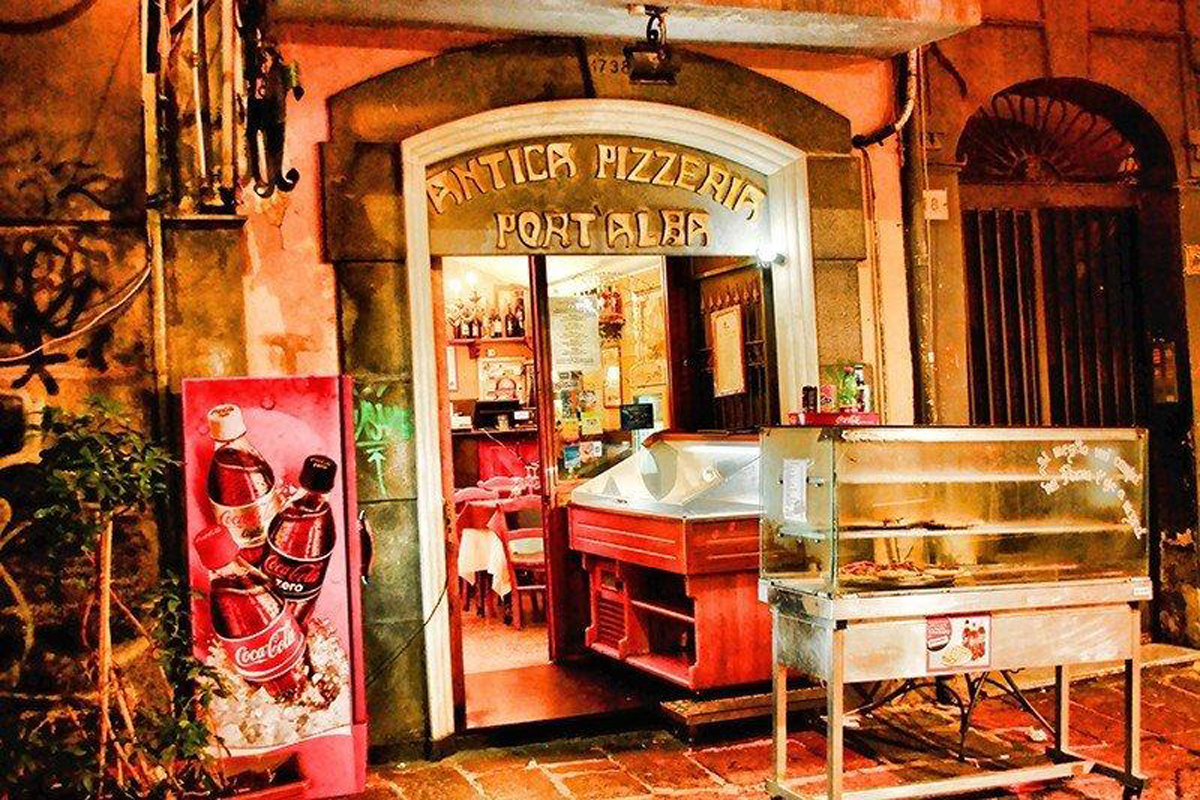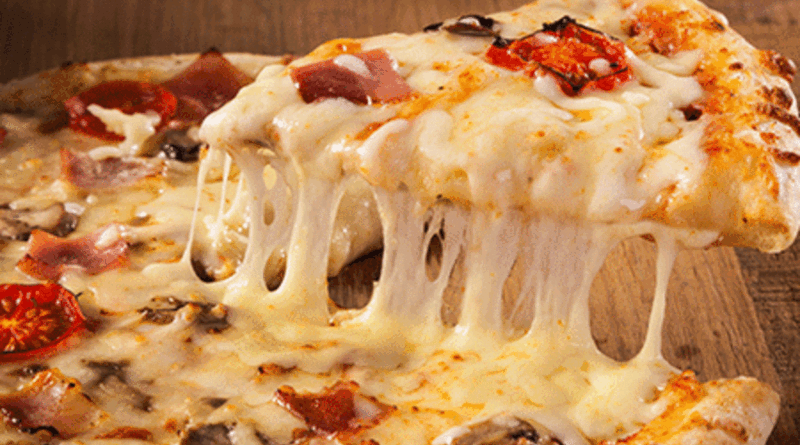History of Pizza: its invention and journey
How did Poor man’s food get its dominant worldwide?
Some studies believe that the word ‘pizza’ has come from the Latin word ‘pinso’, meaning ‘beat or pound’, or have been derived from the Greek word ‘pitta’, which is a flatbread or pie. But in basic form Pizza, is a seasoned flatbread with a long history in the Mediterranean. To know the history of Pizza we should go back in history sometime in the late 18th century.
History of Pizza: where does the Pizza originate from?
It was in late 18th-century Naples, one of the oldest continuously inhabited urban areas in the world, that the pizza as we now know it came into being. Naples under the Bourbon kings had started gaining prominence and started growing fast to become one of the largest cities in Europe. Spurt in overseas trade and a steady influx of peasants from the countryside, its population ballooned almost twice from 200,000 in 1700 to almost 4,00,000 in 1748.
This sudden spurt boosted a lot in the urban economy, but at the same time, a large number of the city’s inhabitants fell into poverty. The most abject of these were known as lazzaroni, one of the homeless idlers of Naples who live by chance working or begging. Around 50,000 lazzaronis scraped by on the pittance and were earning as porters, messengers, or casual laborers.
They were always in search of work. To survive they needed food that was cheap and easy to eat. Their need has been invented Pizza. In those days Pizza was not sold in any shops, rather the street food vendors were selling these pizzas as a cheaper option to meet the customer’s budget or appetite. Even they use to cut and sell those pizzas in pieces. As Alexandre Dumas, a French writer noted in his book namely Le Corricolo (1843), a two-liard slice would make a good breakfast, while two sous would buy a pizza large enough for a whole family. None of them were complicated.
Though similar in some respects to Virgil’s flatbreads, they were now defined by inexpensive, easy-to-find ingredients with plenty of flavors. The simplest were topped with nothing more than garlic, lard, and salt. But others included caciocavallo (a cheese made from horse’s milk), cecenielli (whitebait), or basil. Some even had tomatoes on top. Only recently introduced from the Americas, these were still a curiosity and looked down upon by contemporary gourmets. But it was their unpopularity – and hence their low price – that made them attractive.
For a long time, pizzas were scorned by food writers. Associated with the crushing poverty of the lazzaroni, they were frequently denigrated as ‘disgusting’, especially by foreign visitors. In 1831, Samuel Morse, an American inventor, and painter, who invented a single-wire telegraph system based on European telegraphs – described pizza as a ‘species of the most nauseating cake … covered over with slices of Pomodoro or tomatoes, and sprinkled with little fish and black pepper and I know not what other ingredients, it all together looks like a piece of bread that has been taken reeking out of the sewer’.
The First Pizzeria of the World

Even the cookbooks that appeared till the late 19th century, don’t mention pizza. Even those dedicated to Neapolitan cuisine considered this unworthy to mention it. But despite of that the gradual improvement in the status of lazzaronis, the first pizzeria was officially opened in 1830, namely Antica Pizzeria Port’Alba in the town center at Via Port’Alba 18, Naples, Italy. It replaced street vendors who used to make pizza in wood-fired ovens and bring it on the street, keeping it warm in small tin stoves. Soon this restaurant became a popular meeting point for the men in the street. Since most patrons were artists, students, and others with little money, so the recipe was very simple, with toppings such as oil and garlic. By this time Pizza became a common man’s food but still, it was yet to be accepted by the rest of society.
Royal approval to the Pizza
The story changed after the Italian unification. In 1889, while on a visit to Naples, King Umberto I and Queen Margherita grew tired of the complicated French dishes they were served for breakfast, lunch, and dinner, wanting something different to taste from some local specialties. Raffaele Esposito, an Italian Chef, and owner of a tavern called Pizzeria di Pietro e Basta così were therefore summoned to cook some local specialties for the Queen. He cooked three sorts of pizza: one with lard, caciocavallo cheese, and basil; another with cecenielli; and a third with tomatoes, mozzarella cheese, and basil.
The queen was delighted and she liked the last one very much. More of the combination of tomatoes, mozzarella cheese, and basil were respectively representing the red, white, and green of the Italian flag. Esposito christened this pie as pizza Margherita in her honor. This event became the turning point for Pizza in Italy. Queen Margherita’s seal of approval caused this food to become a fad, from which it retained enduring popularity in every society. Till now the simple food fit only for lazzaroni suddenly became the choicest food for a royal family and transformed into a genuine national Italian food – akin to pasta and polenta. Esposito for this great contribution is also known as the ‘Father of the modern pizza’. His restaurant still exists, although the name has been changed to ‘Pizzeria Brandi’.
After that, the popularity of pizza remained confined to the territory of Naples only and was very slow to move in the outer world. From the 1930s onwards, a growing number of Neapolitans started migrating northwards in search of work, taking their cuisine with them. This is the time when the initial spur was provided.
This trend was further accelerated by the war. When an international military coalition, Allied Forces which was formed during the Second World War with its principal members, Great Britain, the United States, the Soviet Union, and China to oppose Axis Forces, invaded Italy in 1943-45, they were so taken with the pizza they encountered in Campania that they asked for it wherever else they went. Further during the post-war period, the cost of travel declined heavily and started gaining attraction from tourists – that consolidated pizza’s position as an authentic Italian dish. The tourists became increasingly curious about Italian food, which made restaurants think about offering more and more regional specialties – including pizza, throughout the peninsula. Nevertheless, pizza quickly spread throughout Italy. As it did so, the restaurants started introducing new ingredients as toppings in response to local and traveler’s tastes and asking for the higher prices that customers were now comfortably willing to pay.
Pizza goes west
By the end of the 19th century, Italian emigrants had already reached the East Coast; and in 1905, an Italian immigrant Gennaro Lombardi crafted pizza in the United States from his first pizzeria – Lombardi’s – was opened in New York City at 32 Spring Street on the corner of Mott Street in the Nolita neighborhood in the borough of Manhattan. Soon, pizza became an American institution. The growing pace of urbanization also aided a lot in its spreading across the country. Even non-Italian enterprising restaurateurs started venturing into this trade and adapted to reflect local tastes, identities, and needs.
Who invented the famous Chicago Deep Dish Pizza?

Shortly after the US entered the Second World War, a Texan athlete, businessman, and entrepreneur named Ike Sewell attempted to attract new customers to his newly opened Chicago pizzeria known as ‘Pizzeria Uno’ by offering a much ‘heartier’ version of the dish, complete with a deeper, thicker crust and richer, more abundant toppings – usually with cheese at the bottom and a mountain of chunky tomato sauce heaped on top of it. He was the first to invent this famous Chicago Deep Dish Pizza. At about the same time, the Rocky Mountain Pie was developed in Colorado. Although it was not as deep as it’s the Chicago Deep Dish Pizza, it had a much wider crust and was meant to be eaten with honey as a dessert.
Who made the first Hawaiian Pizza?
In 1962, a Greek immigrant, Sam Panopoulos invented another version of pizza topped with sauce, cheese, ham, and pineapple. He named it Hawaiian Pizza. Despite the name, it didn’t come from the US island state of Hawaii. Sam crafted this pizza at one of his Ontario-based restaurants, Canada, and named it after the brand of canned pineapple used on the pie.

Slowly Pizza made its second home in America. Some three billion pizzas are now sold each year in the United States alone, an average of 46 slices per person. The successful journey in this region was witnessed from the 1950s onwards. Due to the rapid pace of economic and technological advancement in the US, pizza transformed even more radically. Two changes are worthy of note. The first was the ‘domestication’ of pizza and the second was its ‘commercialization’.
Domestication of Pizza in the United States
The subsequent rapid expansion of the food industry was part of the consumer boom of the 1950s, during which more and more people bought new refrigerators and freezers. But no less important were the cultural shifts. The 1950s and the ‘60s are called “the golden age of food processing”.
Consumers who had been deprived of consumer goods through the 1930s and the ‘40s, with the war and food rationing suddenly have disposable income. The country become very wealthy, and the market started flooding with various frozen products. In less than a decade, frozen food sales grew from merely $496 million to almost $2 billion. It was the fastest-growing segment of the food industry. But possibly the biggest shift was when families started to move to the suburbs. Now they could drive to the supermarket, buy a ton of food and store it all in their refrigerator, which had a freezer built in then.
In 1955, The New York Times wrote “Frozen foods are no longer a specialty item, but an integral part of the Grocery Business. In this period the increasing demand for ‘convenience’ foods grew – prompting the development of frozen pizza. Designed to be taken home and cooked at will, this required changes to be made to the recipe. Smooth tomato paste started replacing the generous slices of tomato as toppings, which helped in preventing the dough from drying out during oven cooking. Also, the development of new cheeses added an extra twist to the taste buds of the customers.
The commercialization of Pizza in the United States: Start of Domino’s Pizza
The second change was the ‘commercialization’ of pizza. The cars and motorcycles made it possible to deliver freshly cooked food to customers’ doors – and pizza was among the first convenient and popular dishes to be served up. In 1960, the two brothers, Tom and James Monaghan borrowed $900 to purchase a small pizza store called ‘DomiNICK’s’ in Ypsilanti, Michigan that also sold sandwiches and other Italian specialties. Soon the Monaghan brothers realized that the restaurant business was a tough one to succeed in particularly with their vast menu options.
On top of that, they didn’t have a lot of space in their restaurant. The result was an overwhelmed staff and angry customers complaining about wait times and canceling orders. These struggles are a big part of the reason that Dominick’s quickly switched to offering only pizza, and started delivering them to people’s houses. Soon James separated himself from the business and sold his entire 50% stake in the company to Tom in exchange for a used 59 Volkswagen Beetle car. Tom continued his journey and after winning a reputation for speedy delivery, took his company – which he renamed ‘Domino’s’ – nationwide. Domino’s and its competitors expanded abroad so that now there is hardly any city in the world where they cannot be found.
Pizza now is the world’s favorite fast food. People have been eating pizza, in one form or another, in every corner of the world. Paradoxically, the effect of these changes was to make pizza both more standardized and more susceptible to variation. While the form – a dough base, topped with thin layers of tomato and cheese – became more firmly entrenched. As pizza became more entrenched in local cultures, the toppings and styles became more varied. Today pizza is available in Korea with kimchee as toppings, and in India with chicken tikka as toppings.
Today’s pizzas are far removed from those of the lazzarone, and many pizza purists – especially in Naples – balk at some of the more outlandish toppings that are now on offer. While Indians may consider thick crust pan pizza or thin crust pizza, Americans may prefer Deep Dish pizza or Hawaiian Pizza, or California Pizza, but Italians would tell you the only types are Italian and non-Italian!
Pizza in India
India is an enormous country and has an equally enormous appetite for pizza. Pizza-like dishes have been present in India since antiquity, perhaps introduced by ancient Greek traders and conquerors like Alexander the Great. However, some of the pizza’s key ingredients, like mozzarella cheese and basil, have their origins in India as well. Pizzas entered India at a major urban street food market around the 1980s. From the 1990s onwards first Indian chains like Don Giovanni’s and Nirula’s begin serving American-style pizzas to the masses. But its real presence as the modern pizza was witnessed in 1996 when Domino’s opened their first restaurant in the country which was soon followed by several other foreign pizza chains like Pizza Hut and Papa John’s.
In 1998, Belle Ciao restaurant opened in Besant Nagar, Chennai was the first of its kind to serve authentic Italian pizzas. Although most ovens were directly imported from Italy at that time, a few Italians in Pondicherry had started manufacturing indigenous wood-fired pizza ovens using fire bricks, clay, and concrete. To infuse a special smoky aroma, they preferred to use mango wood. But there was a big challenge in getting good quality ingredients, like olive oils, flour, or meats. Given the success of Italian restaurants, pizzas have found their way onto the menus of most five-star hotel restaurants in the country. The first pizza oven was installed by Le Royal Meridien in their coffee shop.
In 2002, The Park Hotel kick-started the artisan and gourmet thin-crust pizza trend with Chef Willi in the kitchens. India is the 2nd largest pizza market in the world with thousands of foreign and domestic pizza restaurants in operation in large and small cities of the country.
Pizza now has become one of the most popular food categories. Today, there is a growing concern around the world that pizza is an unhealthy food option that is fuelling obesity, specifically in children. Somehow it is truly a point of concern, most fast-food pizzas are high in fat, calories, and sodium, which have adverse effects on health. But rather than branding it as a villain, improving its nutritional content and reducing the quantity consumed are more viable options. This is the space where bakers started crafting artisanal pizzas with better healthy options.
Fresh, high-quality, local, organic ingredients are finding their way onto pizza menus. Many ingredients, ranging from whole wheat flour to rye, soya bean or lentil flours, or even ethnic millets like ragi (finger millet), or thinai (foxtail millet) flours are incorporated into the dough to make pizzas nutritionally richer. There is an option to reduce your calorie intake by choosing Low-fat Mozzarella cheese. Topping pizzas with a variety of fresh vegetables could well be a smart way of getting them to eat vegetables. Gluten-free pizzas are now also available in the market.
Then what are you waiting for? Just start loving this food which has traveled centuries across countries to reach you.
Crafted Awesomely for your favorite taste buds.
Photo: Times Food





Thanks for sharing. I read many of your blog posts, cool, your blog is very good.